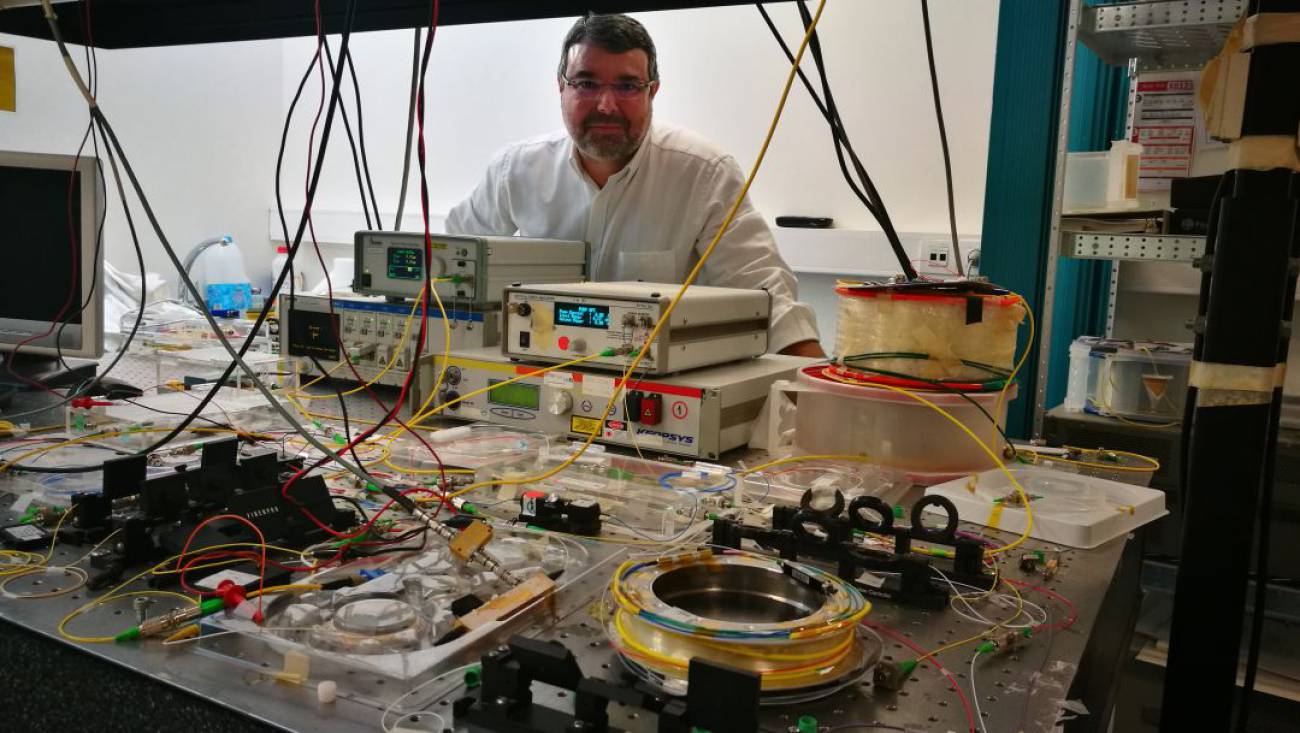
Researchers from the Universitat Politècnica de València belonging to the Nanophotonics Technology Center, together with eight other European partners, have developed a new infrastructure technology for 5G communications, which will allow Internet connections up to 100 times faster than those provided by the 4G network . This is the main result of Horizon 2020 TWEETHER, a European project led by the University of Lancaster (United Kingdom) and from which have arisen what will be the future «arteries» of fifth generation communications.
The TWEETHER wireless network is a point-multipoint network that operates on a spectrum not currently used, in the millimeter band in the 90 gigahertz (GHz) region. The project partners have developed a radio technology and fabricated circuits and amplifier devices with a capacity similar to fiber optic – but without the need to pull cable. According to the tests carried out, with this transport technology it could reach a capacity higher than 10 Gigabits / second.
«The arteries that support the 5G mobile telephony of new generation will operate at very high frequencies, from 90 GHz which will lead to great technological difficulties. Currently, there is no commercially available device that works in this range of 92-95 GHz. In this European initiative, a progressive wave amplifier has been designed that would allow the correct functioning of the 5G communications infrastructure in the millimeter wave band. long distances «, explains Roberto Llorente, deputy director of the Nanophotonics Technology Center of the UPV.
Thus, with the results of this project, operators will be able to offer ubiquitous high bandwidth Internet access. With the TWEETHER network, the user will have greater bandwidth, coverage and capacity than the current wireless networks offer, which will allow the enjoyment of services with high added value and with a high quality of both broadcast and reception. «To give an example of the day to day, with this technology the cuts or the pixelated image of a video call will disappear; or we can enjoy 4K content on our mobile devices, «says Roberto Llorente.
Advanced applications
On the other hand, this new infrastructure 5G will also allow to offer services that require very low delay (latency) for advanced applications such as the connected vehicle, in which, although a large volume of data will not come into play, it will be essential that the time it takes to get that data from one vehicle to another is exceptionally short in case of emergency.
«Our technology guarantees these levels of latency due to its point-to-multipoint configuration, so if, for example, an accident occurs, the rest of the vehicles in nearby cells have that information practically instantly,» explains Llorente.
Digital divide
In addition, TWEETHER will also help to reduce the digital divide, which causes millions of users around the world – mainly in residential, suburban or rural areas where fiber optic can not be deployed – do not have access to advanced services over the Internet. The technology developed in the project allows to establish wireless coverage in large geographical areas in an economic way in a matter of days.
First world transmission
The partners of the TWEETHER project carried out at the end of last month at the Universitat Politècnica de València the first worldwide transmission of data within the W band, which is between 92 and 95 GHz.
The field test was the result of more than three years of work in the design of cutting-edge components and systems to enable the first point-to-multipoint wireless system above 90 GHz.
Professor Claudio Paoloni, Project Coordinator and Director of the Engineering Department at the University of Lancaster, points out that TWEETHER has been a visionary project for an advance in wireless communication networks. «The development of European millimeter wave technology aims to solve two main challenges of modern communications: a form of wireless transmission to and from new 5G small cell networks, and the digital divide that affects millions of homes without broadband in areas where fiber can not be deployed, «says Professor Paoloni.
Together with the UPV and the University of Lancaster, the project has also involved Thales MIS, OMMIC, Telecom ParisTech, Bowen, When-AB (France), Fibernova Systems, Goethe University in Frankfurt and HF Systems Engineering (Germany).